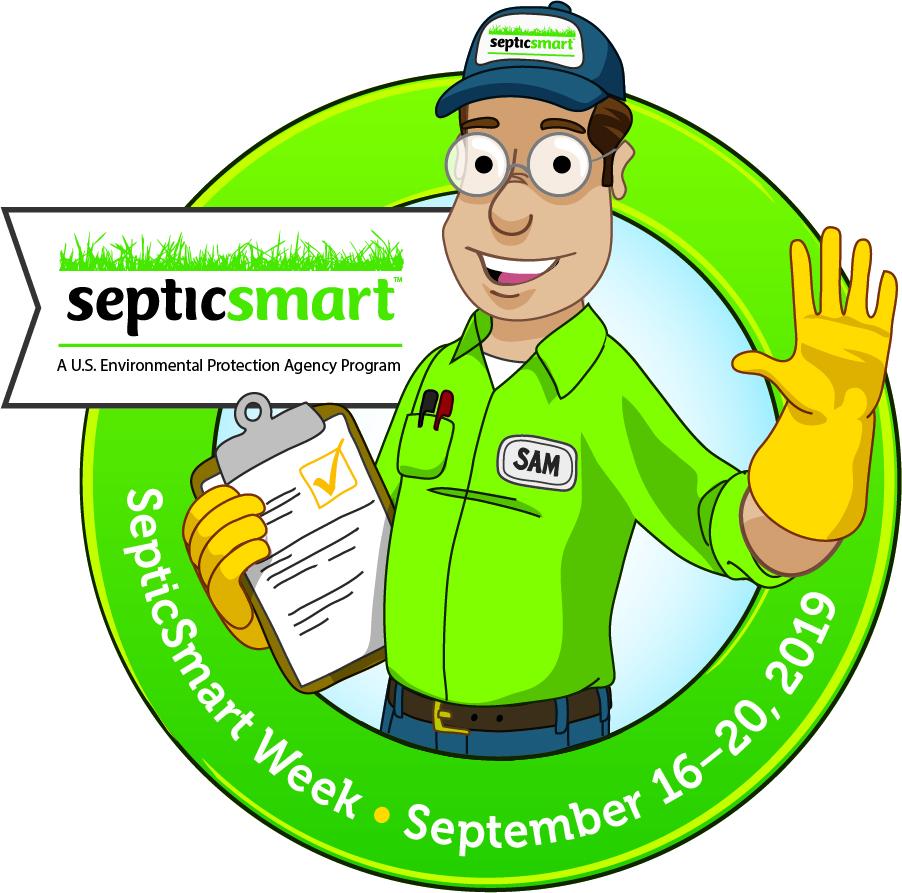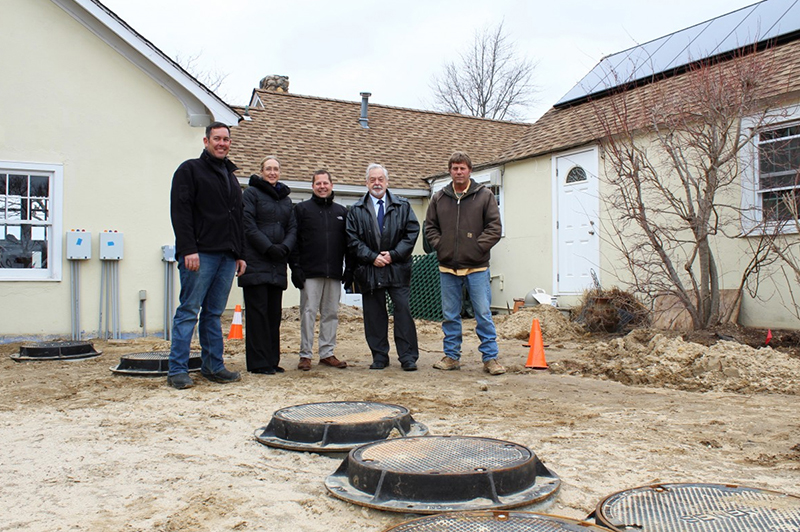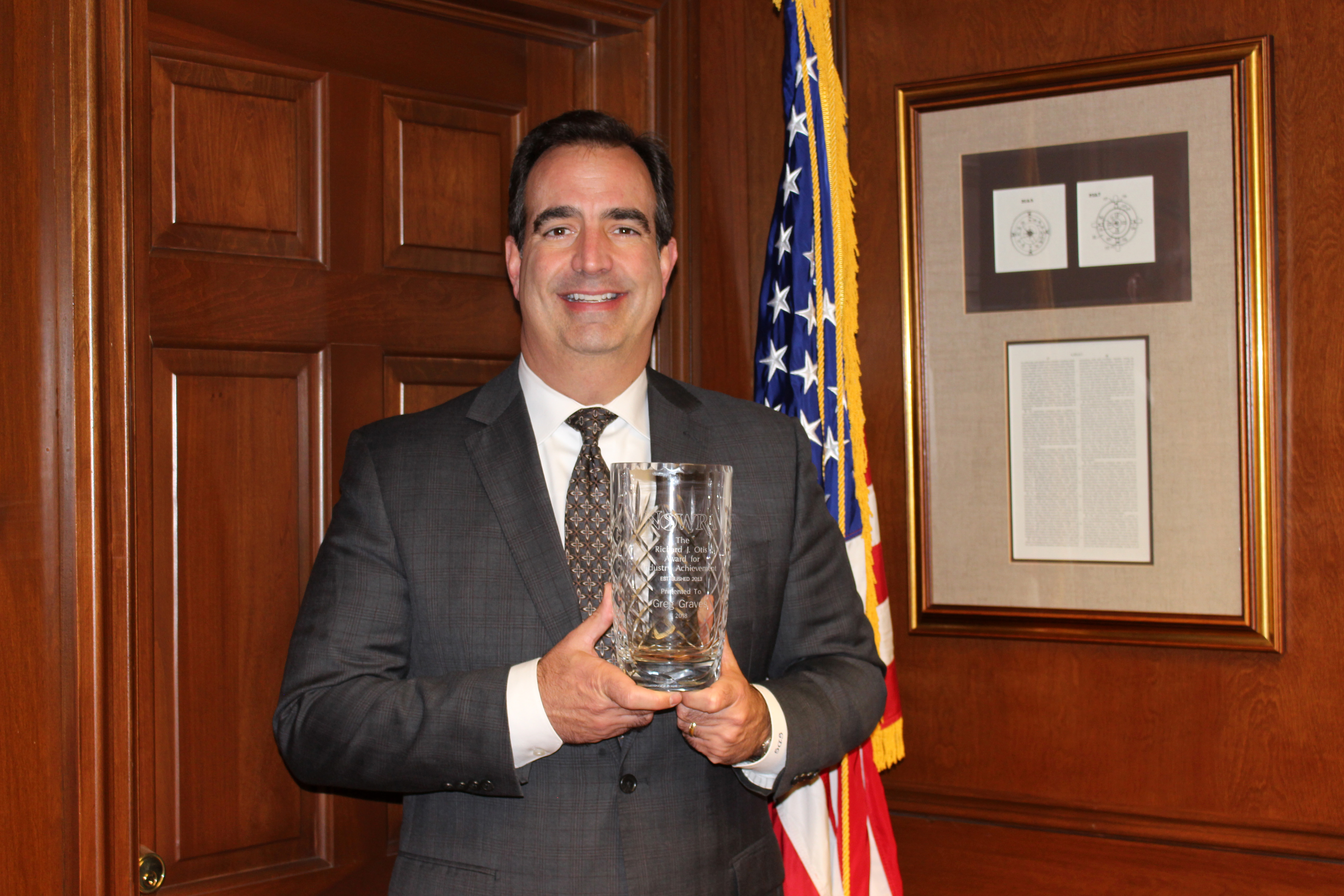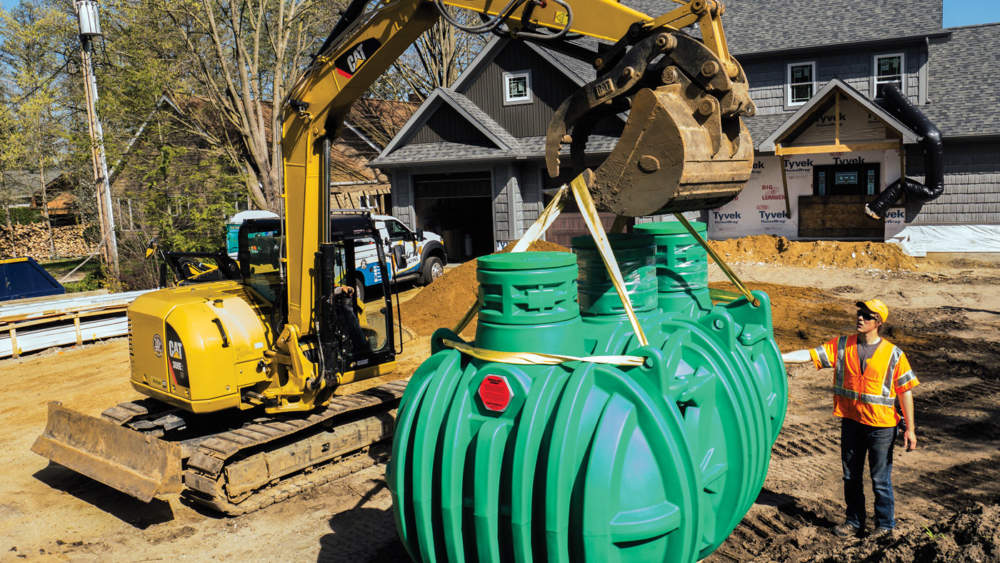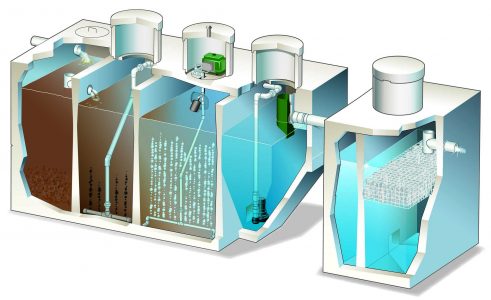Category: Uncategorized
National Environmental Health Association (NEHA)
After the events of the past year, emergency preparedness has clearly emerged as one of the most important topics facing environmental health. The 2017 hurricane season left hundreds of billions of dollars-worth of damage in its wake. Meanwhile, wildfires in California burned over 1.2 million acres, resulting in five of the 20 most destructive fires in the state’s history. Despite the expansive media coverage these disasters generated, damage to wastewater treatment systems, especially private ones, was rarely discussed. Over 20% of U.S. households rely on a septic system, making them a key component to how wastewater is treated in this country. Septic systems can be damaged by hurricanes, wildfires, and a range of other disasters. Under flooded conditions, septic tanks can become dislodged and float out of the ground, heavy firefighting equipment can damage drain fields, and earthquakes can lead to drinking water contamination if septic tanks or pipes are damaged.
Including septic systems in preparedness efforts is essential to a strong recovery. Local and state health departments can provide guidance to septic system users in their communities and help residents identify qualified professionals if any repairs are needed. The best resource homeowners have, however, might be one they haven’t considered: themselves. Being well versed with their septic system type, location, and components will help homeowners understand how different disaster events might impact their systems. Recognizing warning signs after a disaster and knowing when to call a licensed professional will also save homeowners from costly repairs down the road and protect their families’ health. Taking steps to care for one’s septic system, such as being mindful of what goes down the drain or keeping cars off the drain field, will also help systems function during and recover after a disaster hits.
From the national to the local level, more can and needs to be done to incorporate septic systems into emergency preparedness planning. While counties, states, and even federal agencies can grow their programs in this area, homeowners are best armed with a thorough understanding of how their system operates and who they should contact when something goes wrong. Unfortunately, years fraught with disaster events like 2017 are likely to become more frequent. Raging hurricane and wildfire seasons may strike again, and other disasters affecting septic systems will likely return. Building capacity at the state and local level is critical, but homeowner education is necessary to creating an efficient emergency preparedness program for septic systems.
Check out some of the free educational resources below to get started.
Environmental Protection Agency: https://www.epa.gov/septic
National Onsite Wastewater Recycling Association: http://septiclocator.org/
Disinfection of municipal wastewater is necessary for safe potable water supplies and for healthy rivers and streams. Microorganisms are present in large numbers in sewage treatment plant effluents and waterborne disease outbreaks have been associated with sewage-contaminated water supplies or recreational waters.
It’s all too easy to forget that freshwater is a finite resource. Most of us don’t have to travel much farther than the faucet, and the proliferation of water bottles and drinking fountains have made water scarcity a non-issue. At least, this is how it appears at first, but that’s only surface-level.
Two-thirds of the world’s population may face water shortages by 2025. Water reuse practices help alleviate pressure on our water sources and is a strategic approach to water scarcity. The Singulair® R3 is the world’s simplest water reuse treatment technology.
The collective demand for freshwater can deplete rivers, lakes and groundwater reservoirs faster than they can replenish themselves. When this happens, we disrupt the rate of recharge and cause our sources of water to dry up. They eventually recover, of course, but only if we reduce our dependence on them.
Fortunately, we have strategies for water reuse that help conserve our available resources. Through the practice of “water recycling,” we alleviate the pressure on our water sources and take a strategic approach to the problem of scarcity. A diverse variety of methods exist, ranging from simple to complex.
As an example, homeowners can harvest rainwater in barrels and use it for gardening. A more elaborate example of water recycling may involve the collection and reuse of greywater — or slightly dirty water — for toilets, irrigation and similar applications where complete purity isn’t a concern.
Did you know penguin poop provides essential nutrients for new terrestrial life to flourish in Antarctica? In arctic climates, vital nutrients that cultivate life are few and far between. Researches are now mapping the nitrogen footprint across the continent to further study its effects on this ecosystem.
“What we see is that the poo produced by seals and penguins partly evaporates as ammonia,” Bokhorst said in a statement. “Then, the ammonia gets picked up by the wind and is blown inland, and this makes its way into the soil and provides the nitrogen that primary producers need in order to survive in this landscape.”
Long Island’s Hampton Coffee House upgrades septic system to Norweco’s eco-friendly Singulair nitrogen reducing wastewater treatment system. “All of us at Hampton Coffee live in this community so the environment around us is not only important to us as a company, but personally as well,” reflected company co-owner Jason Belkin. “We already made the switch to paper straws in response to our staff and guests’ concerns and we’ve been recycling for years. This is amazing that now we are turning our wastewater into basically the quality of water that comes from your backyard hose. We’re really proud to be making this difference.”
The I/A OWTS system that Hampton Coffee Company selected is the state-of-the-art Singulair system by Ohio-based Norweco, which is a system that Suffolk County has approved. The system uses only half of the energy of other systems, as it is activated only 30-minutes every hour.
When President Donald Trump signed the 2018 Farm Bill on Dec. 20, it included a present for onsite installers. A few paragraphs in the bill allow low-income rural homeowners to access a pool of money for upgrading or replacing their onsite wastewater systems. The law allows grants of up to $20,000.
Because this is a piece of federal legislation, that doesn’t mean the cash drawer is open. The way Congress works, a bill creating a program is separate from the appropriations bill that allocates money it.
The National Onsite Wastewater Recycling Association (NOWRA) recently announced the 2018 recipient of the Richard J. Otis Industry Achievement Award. Gregory Graves, President of Norweco, Inc. and past President of NOWRA, received the award during the NOWRA Mega-Conference held in Minneapolis on Oct. 21 to 24.
The first recipient was such a well-respected onsite wastewater professional that the award bears his name. The Richard J. Otis Industry Achievement Award is awarded annually to recognize an individual that has shown an outstanding commitment to the NOWRA Association and to the wastewater treatment industry. Richard’s son, Chris, presented Greg with the award.
On Tuesday, October 23, President Trump signed the America’s Infrastructure Act of 2018, which contained key provisions of the NOWRA Act. This is a major milestone for NOWRA, as this marks the first legislation it has successfully passed.
The legislation President Trump signed contains the following provisions from the NOWRA Act:
- Information Clearinghouse. EPA is directed to set up a technology clearinghouse on the cost-effectiveness of alternative wastewater technologies, especially onsite/decentralized wastewater treatment.
- Disseminate Information to Local Governments. EPA must share information about the cost-effectiveness of onsite/decentralized wastewater treatment with local governments and non-profits seeking federal funding.
- Report to Congress. One year from now (and every three years thereafter), EPA must tell Congress how well it has met the first two objectives and also describe what other actions it has taken to increase deployment of onsite/decentralized treatment.
Ironically, NOWRA’s Lobbying Board of Governors was in the middle of a meeting at the Onsite Wastewater Mega-Conference when the news crossed the wires that President Trump has signed the legislation. It was somehow fitting that they were among the first to receive the news, as it marked the climax of a nearly two year effort by the group to get the NOWRA Act introduced in Congress and passed.
The legislation is a significant victory for the association and the industry. NOWRA President Jim Bell said, “This is a big win for NOWRA and for our industry. Requiring EPA to develop information about the cost-effectiveness of onsite/decentralized treatment, and to share it with governments seeking federal wastewater funding will help level the playing field and enable decision-makers to better understand the benefits of our industry’s technologies. There is much more we need to do for our industry, but this is a very good start.”
The requirement that EPA must report back to Congress on what it’s done to increase the use of onsite/decentralized technology is important also. Tom Fritts, who serves as the chair of the Lobbying Board of Governors, noted, “this requirement will help keep the agency focused on how they can help more onsite systems to be deployed. I know that Members of our Congressional Decentralized Wastewater Recycling Caucus will be interested in the results and the extent to which their efforts have produced measurable growth in use of our industry’s technologies.”
A presidential signature on the bill was never in doubt, as the legislation passed both the House of Representatives and the Senate by near unanimous margins. In fact, even before the bill was signed into law, Senator Ben Cardin (D-MD), recorded a video message which was played at the state of the 2018 Onsite Wastewater Mega-Conference. He thanked NOWRA for its efforts and offered congratulations on the organization’s efforts to make this legislation happen. Sen. Cardin is the Ranking Member of the Senate’s Environment and Public Works Committee, the committee which oversees all water-related legislation.
A homeowner needed help choosing wastewater systems for a lakefront estate. Dervin Witmer, owner of Dig-It Excavating in Cassopolis, Michigan, recommended a Norweco residential wastewater treatment system.
The project involved tearing down an old cottage and building a new, larger, four-season home on a lot right beside a lake. The owners had two goals for their wastewater system.
“One was environmental: They wanted to keep the lake clean and not contribute to the algae problem. But they also wanted alternative technology because of the space they had available,” Witmer says.
When the home was first proposed to the county, the design called for a standard wastewater system. There was a 1,500-gallon septic tank, a 500-gallon dosing tank, and an 800-square-foot drainfield in a sand mound built up to give adequate separation from the 12-inch seasonal water table.
Then came the twist that brought the job to Witmer. After the house was up, the contractor discovered a neighbor’s well had not been included in the permit information. Setback requirements left no room for the conventional system in the original design. That’s when Witmer’s friend called.
Witmer suggested the Norweco Singulair Green. It is a single tank, and with other changes to the home, the drainfield could be reduced to 600 square feet.
The Hydro-Kinetic Model 600 FEU (flow equalized upflow) wastewater treatment system from Norweco has been NSF Standard 40 and 245 certified. The residential wastewater treatment system passed two consecutive back-to-back tests without performing routine maintenance for 12 months.
During the 12-month testing period, the system achieved effluent results of 2.0 mg/L CBOD, 2.0 mg/L TSS and 7.9 mg/L Total Nitrogen. The effluent quality is ideal for installations where exceptional treatment and field sampling are mandated by regulation.
Flow equalized liquid from the clarifier enters the Hydro-Kinetic filter where it flows downward and is evenly distributed beneath filtration media. The liquid then travels through the proprietary attached growth filtration media where the final treatment takes place. The non-mechanical flow equalization device guarantees all incoming wastewater is fully treated, regardless of heavy use periods.
The system includes a Model A100 air pump, which maximizes operational efficiency and increases service life. Multiple air pump mounting locations are available. The Model SD103 recirculation pump features a 1/3 hp electric motor securely mounted in an oil-filled, watertight, corrosion-resistant housing with lubricated ball bearings to assure long life. The pump features a 2-inch discharge connection.

